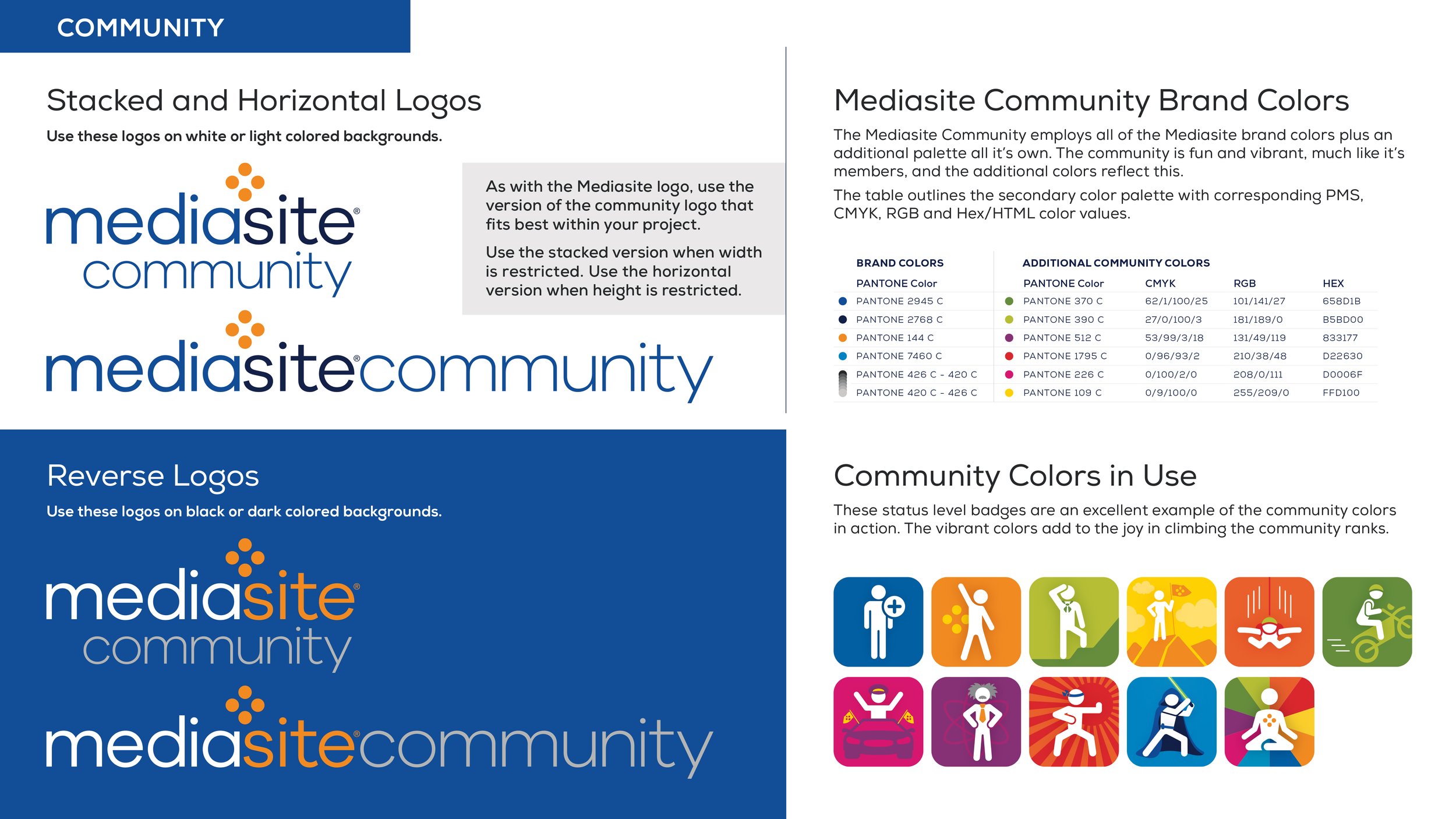Brand engagement doesn’t just happen; it is driven by value.
From 2015 into 2016, I spearheaded the Mediasite rebrand for Sonic Foundry, delivering a comprehensive brand identity system that not only resonated across diverse cultures but also significantly boosted global market share. This wasn't merely an aesthetic overhaul; it was a strategic initiative that directly addressed business challenges.
Navigating Growth: A Brand Identity Crisis
Sonic Foundry's acquisition of two international companies, coupled with a significant shift in their business model, resulted in a fragmented and inconsistent brand identity. This lack of brand cohesion created several challenges: potential clients struggled to understand the company's unified value proposition, leading to confusion and a lower conversion rate. Feedback from the Mediasite user community also revealed difficulties with the user experience, further highlighting the urgent need for a cohesive brand identity.









Rebuilding the Brand: A Strategic Solution
My contributions to the Mediasite rebranding demonstrated a diverse skillset. I spearheaded the strategic direction, creating a cohesive brand narrative across all touchpoints; I led the design and implementation, delivering a fresh logo and updated visual language; and I fostered crucial cross-functional collaboration. Ensuring consistent communication across marketing, product, and engineering teams was challenging, requiring patience, empathy, and creative problem-solving to effectively integrate the diverse perspectives of employees and customers involved in the technology adoption process.
This human-centered approach, built on extensive stakeholder interviews to fully grasp the connections and needs across all levels of technical expertise, informed the design. The result is a global EdTech brand that is both accessible and informative.
I created a strong and distinctive visual identity for Mediasite—featuring a clean sans-serif font, a rich color palette of blue, dark indigo, and orange to evoke trustworthiness and innovation, and a four-dot logo subtly referencing the brand's video origins (a nod to a film reel). This design element also cleverly emphasizes the "media" in the Mediasite name. The unified brand, clearly communicating the powerful point of view, "Mediasite is Video Done Right," addressed a previously fragmented brand image.
This new identity reflects Mediasite's evolution from a room-based desktop platform to a versatile, mobile-friendly solution. It was a key element in creating a unified brand strategy that is now driving engagement and adoption across all Mediasite products and services.
Measurable Impact: Growth and Market Recognition
The rebranding initiative resulted in significant business growth, highlighted by the acquisition of contracts with prestigious universities, including Texas A&M and UC Berkeley, along with strategic collaborations with infrastructure partners like NORDUnet and UNINETT. These achievements reflect my efforts to position the capabilities of the products and the benefits of the brand, reinforcing the idea that “Mediasite is Video Done Right.” This growth transformed the organization’s understanding of design's role in creating meaningful business value.
By creating a brand identity with a clear point of view—'Mediasite is Video Done Right'—I established strategic priorities that enabled bold actions, ultimately leading to significant fiscal highlights. Notably, revenue from services and products increased by $1.4 million, or 11%, reaching $14.1 million in the year following the rebrand, compared to $12.7 million the previous year. Additionally, overall revenue grew to $9.5 million, reflecting a 4% increase from $9.1 million in the year before the brand launch.



Career Impact: Growth Opportunity
I owned a boutique strategic design agency when I won the account to rebrand Mediasite, Sonic Foundry's flagship product. Due to the scale of a global rebrand, I served as the creative director and lead designer for the project. This opportunity gave me a deeper appreciation for the vital role of design in business strategy, particularly for companies that innovate and enhance services through technology. I realized that a successful growth strategy must encompass products, services, and experiences specifically designed to create and communicate meaningful value for customers.
As a result of my work, Sonic Foundry offered me a position to lead their design operations. I accepted their offer because I saw new potential to create greater value through deeper business and customer relationships—something that wasn't as accessible in agency work. Additionally, I believed that the work-life balance of an employee would provide me with more time for my daughter, who was four at the time. Consequently, I dissolved my agency's business structure, negotiated the sale of assets, assisted staff with their transitions, and referred clients to other agencies.











